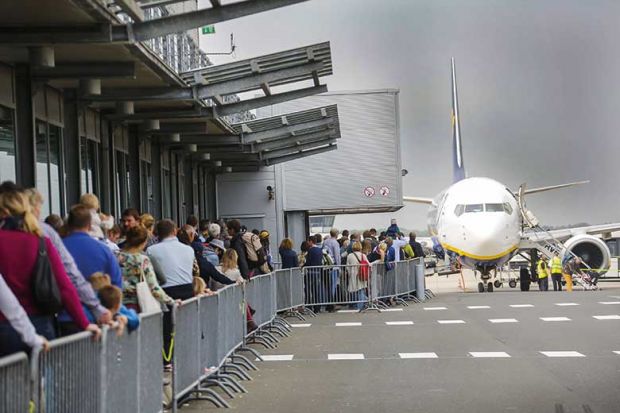University leaders have been urged to offset greenhouse gas emissions from student mobility as new figures estimate that the global carbon footprint of such activity is comparable to the annual emissions of Croatia.
A study estimates that the greenhouse gas emissions associated with international student mobility were between 14.01 and 38.54 megatons of carbon dioxide equivalent per year in 2014 – having roughly doubled from between 7.24 and 18.96 megatons in 1999.
These emissions, which include travel-related emissions and the change in emissions that result from students’ personal consumption while studying abroad, are rising faster than overall global emissions, while the upper estimate is comparable to the national annual emissions of Tunisia or Croatia, the paper adds.
The research, published in the Journal of Cleaner Production, was based on three sources of data: bilateral flows of degree-mobile international students from the United Nations Educational, Scientific and Cultural Organisation’s Institute for Statistics; the locations of all international airports and scheduled flights from the OpenFlights dataset; and the World Bank’s per capita greenhouse gas emissions.
Robin Shields, associate professor in higher education management at the University of Bath and author of the study, said that “international student mobility is a very good thing for many reasons” but “the environmental costs are just one downside which is not often considered”.
He added that universities could “seek to offset” greenhouse gas emissions from mobility and “call on policymakers to take more urgent action in this area”.
“A lot of universities have taken great steps around ‘greening’ the campus and [using] sustainable energy on campus. What they haven’t done perhaps as much as they could have...is policy advocacy around climate. You don’t see many university vice-chancellors calling for action on climate change,” he added.
Despite the overall increase, the research states that emissions per student are slowly decreasing, largely as a result of changes in patterns of mobility.
“Mobility is increasingly regional. Students are going abroad but they’re staying within their geographic region,” Dr Shields said.
He added that this could be because of the development of quality education in many countries, the establishment of international branch campuses and regional cooperation agreements in areas including Southeast Asia and Europe.
Ailsa Lamont, director and founder of Pomegranate Global, an organisation that aims to support the education sector to take more action on climate change, said that many universities have net zero carbon targets and “excellent teaching and research in climate science” but “there is much more that institutions can do”.
“They must use their reach to instil basic climate action literacy in all students and staff, and look for every opportunity to reduce their ecological footprint through sustainable procurement choices and replacing unsustainable models of delivery,” she said.
后记
Print headline: Student flights take climate toll




